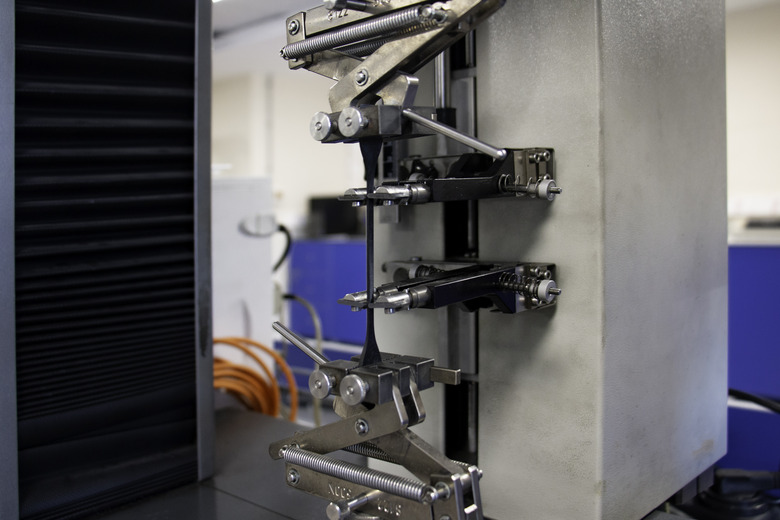How To Convert A Load To PSI In A Tensile Test
During a tensile test, convert the loading force on the material to pounds per square inch (psi) to determine the pressure exerted. A tensile test involves the elongation of a material by a pulling force known as the load. Generally, the distance the material stretches is directly proportional to the load applied. These tests give insight into the usefulness and safety of various materials in construction and engineering applications. The pressure exerted on the material during the test relates to the force exerted and the area of the surface to which the force acts.
Step 1
Measure the length in inches of the surface where the force is applied. This area coincides with the face of the material facing the force direction. As an example, if you wanted to determine the force applied to stretch a rectangular plastic bar, measure the surface. Assume the rectangular side of the bar has a length of 4 inches.
Step 2
Measure the width in inches of the surface where force is being applied. As an example, the width might be 2 inches.
Step 3
Determine the area of the material. Multiply the length times the width to get the area of the side of the material in square inches. Using the example, 4 inches times 2 inches equals an area of 8 square inches.
Step 4
Divide the loading force stretching the material by the side area to obtain the pressure applied in psi. Assume a load of 70 pounds. Completing the example yields 70 pounds divided by 8 square inches, which equals 8.75 psi.
Things Needed
- Tape measure
- Calculator
References
Cite This Article
MLA
Hirsch, William. "How To Convert A Load To PSI In A Tensile Test" sciencing.com, https://www.sciencing.com/convert-load-psi-tensile-test-7933570/. 14 February 2011.
APA
Hirsch, William. (2011, February 14). How To Convert A Load To PSI In A Tensile Test. sciencing.com. Retrieved from https://www.sciencing.com/convert-load-psi-tensile-test-7933570/
Chicago
Hirsch, William. How To Convert A Load To PSI In A Tensile Test last modified March 24, 2022. https://www.sciencing.com/convert-load-psi-tensile-test-7933570/
